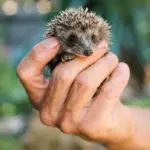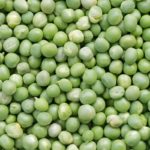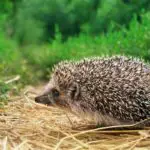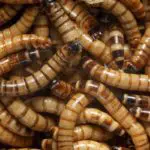While hedgehogs are very cute, sweet, and we enjoy learning about them and getting to know these sweet mammals, there is very little that most people know about the science of hedgehogs.
What goes on beneath that heavily quilled exterior?
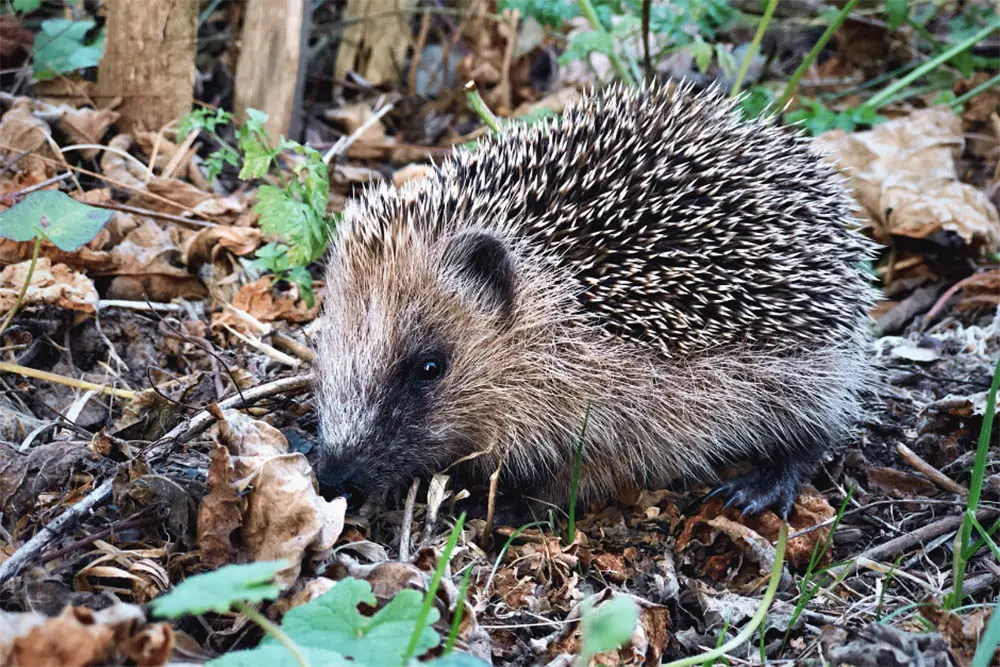
Hedgehogs come from an ancient family, fossils have even been found that suggest creatures much like hedgehogs may have been on earth for 15 million years.
The hedgehogs of today do not actually have any close relatives among other mammals, but they may have very old links with shrews and perhaps moles.
Hedgehogs are a family on their own, and they do not even have any links with other quilled animals such as Porcupines.
Hedgehogs have a dozen or so subspecies, they have five in South East Asia, three in Africa, Two in China, and none in the Americas. British hedgehogs and European hedgehogs are the same, they occur over much of the continent of Europe and are also now in New Zealand.
What we really want to know is what is going on beneath the surface, and what does their skeleton look like? Is their quilled exterior a shell, like turtles, or is that a visual facade and their skeletons more like rats, shrews, or voles?
Today, we will give you all you need to know about what goes on beneath the surface of hedgehogs.
Beneath the quills
Beneath the prickles of the hedgehogs exterior is an outstanding system of muscles which are designed to allow the hedgehog to lower and raise its spines when needed, When it is frightened its muscles allow it to tighten up around its flanks and curl up, so that its soft parts are all guarded by a defensive layer of quills.
So, it clearly has some very strong muscles, but what about the bones? There is nothing exceptionally unusual about a hedgehogs’ skeleton. It has four legs made much like ours, shoulder blades and a long spine and rib cage.
Its skull has similar features to rodents, and its feet are also similar to many rodents, too. There is nothing outstandingly unusual about these creatures, except perhaps their neck.
Hedgehogs do not have a very long neck, and their bones in the neck are very compact. This is probably a feature that helps it to roll up into a small and compact ball with more ease.
The hedgehogs’ ability to roll itself into a ball and stay this way for a long time, a very long time in hibernation, is made possible by the long and powerful muscle across its spine that covers its back like a superhero cape.
The muscle extends all over their back, thus meaning they can curl up into a tight ball, with only their noses uncovered by spines when they are in this position. Inside this tightly rolled up ball, their skeleton poses much like a human fetus in the womb.
Anatomy of a hedgehog
There is nothing unexpected about hedgehog skeletons, their skeletons much resemble that of rodents, and the only surprise is a very short neck. The most distinctive feature of hedgehogs is their spines which are made out of keratin like human hair and nails.
Each hedgehog will have between 5,000 to 7,000 spines all over their body, except from on their face, legs, and underside.
When you look at a hedgehog, you might think that their quills are much like the ones that porcupines have, as they are point pointy structures that keep predators away. However, they are not the same, porcupine quills are barbed and do not come out easily, porcupines can also fire their quills out like projectiles.
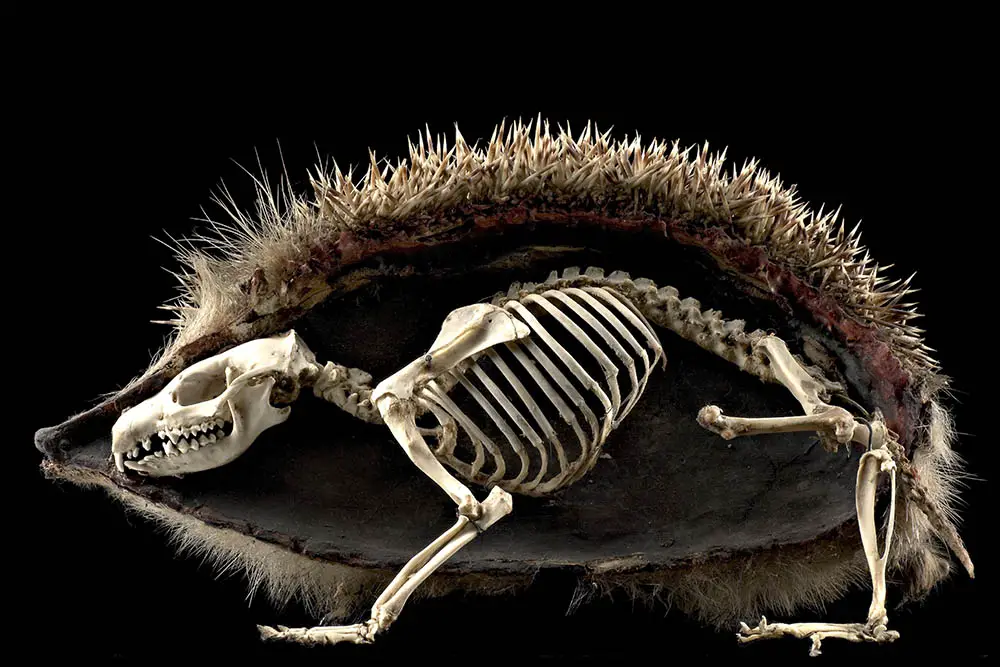
Hedgehogs have neither of these features and instead their quills are like armor, rolling themselves up in a ball the quills act as a pointy barrier that keeps the predator away from their softer side.
Hedgehogs are usually only 6 to 8 inches long, and they typically weigh around 3bs, with more than a third of this weight being accounted for in their spines.
Hedgehogs also hibernate, which means they have the ability to drop their body temperature that allows them to survive in cold climates with minimal resources. They also burrow, and while their eyesight is terrible, their sense of smell and hearing is impeccable.
Hedgehogs also eat plants and meat, they will typically eat whatever is available to them from eating worms and slugs to beetles and root, sometimes fruit, and even on occasion they may snap up a baby mouse.
MBD in hedgehogs
Hedgehogs are strong survivors, their hibernation and quills say enough for this. Sadly, though they cannot survive anything, their diet is more sensitive than you would believe considering they are happy to eat almost anything.
Hedgehogs cannot eat bread or milk, mealworms, sunflower hearts, peanuts, or any chicken or beef. When it comes to meal worms, these can create issues for hedgehogs in the form of metabolic bone disease.
In hedgehogs who have had this they are X-rayed, their bones should show up bright and white on an X-ray scan, but if MBD is present they will not.
The calcium in their bones will have been drawn out into their bloodstream to the lower levels there, which are caused by high levels of phosphatase, the result of eating too many mealworms. Many of these other foods will cause the same problems, aside from milk, as hedgehogs are lactose intolerant.
Hedgehog facts worth knowing
- Hedgehogs have long legs, even though they might not look it. They are 10 cm long, and they can run as fast as we can walk.
- Hedgehogs have long legs, even though they might not look it. They are 10 cm long, and they can run as fast as we can walk.
- Hedgehogs have long legs, even though they might not look it. They are 10 cm long, and they can run as fast as we can walk.
- Hedgehogs have long legs, even though they might not look it. They are 10 cm long, and they can run as fast as we can walk.



